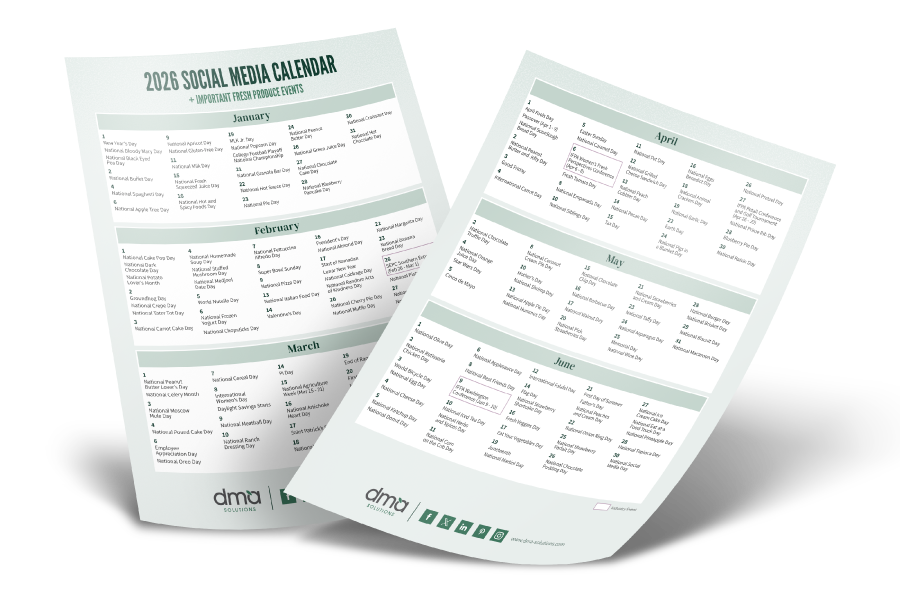How to Use Health Claims and Benefits in Your Fresh Produce Marketing (Without Breaking FDA Rules)
Health-conscious, active lifestyle shoppers are hungry for more than just fresh fruits and vegetables — they want to know how produce supports their well-being. For fresh produce marketers, this presents a huge opportunity to communicate the natural benefits of your products. But before you start promoting your apples as “heart-healthy” or your spinach as a “superfood,” it’s crucial to understand how to talk about health in a way that is both compelling and compliant with FDA regulations.
Here’s how to do it right.
Understand the Three Types of Claims Recognized by the FDA
When it comes to marketing fresh produce, there are three main types of claims you need to understand:
1. Nutrient Content Claims
These describe the level of a nutrient in a food — such as “high in vitamin C” or “low in sodium.” These claims must meet specific FDA definitions.
Example (compliant):
“Oranges are an excellent source of vitamin C.”
Tip: Use the USDA’s FoodData Central database to confirm nutrient levels and ensure your claims meet the FDA’s thresholds.
2. Health Claims
These link a food or nutrient to a reduced risk of a disease or health condition — such as “diets low in sodium may reduce the risk of high blood pressure.” These claims are strictly regulated and must be approved by the FDA.
Example (compliant):
“Diets rich in fruits and vegetables may reduce the risk of some types of cancer and other chronic diseases.”
—FDA-approved wording.
Avoid: Making direct claims like “this berry prevents cancer” unless supported by FDA-reviewed evidence.
3. Structure/Function Claims
These describe how a nutrient affects the structure or function of the human body — such as “fiber helps support digestive health.” These do not require pre-approval, but they must be truthful and not misleading.
Example (compliant):
“Fiber in raspberries supports digestive regularity.”
Keep It Simple, Truthful, and Supported by Data
Don’t overpromise. Consumers appreciate transparency, and regulators require it.
Instead of saying:
🛑 “Our kale cures inflammation.”
Say:
✅ “Kale is a natural source of antioxidants, which help support the body’s ability to fight oxidative stress.”
Always have credible sources — such as USDA nutrient data, peer-reviewed research, or FDA guidelines — to back up your claims.
Highlight Nutrients with Recognized Benefits
Focus on nutrients that are well-known for their health benefits and commonly found in your produce. These include:
- Vitamin C (supports immune health)
- Fiber (supports heart and digestive health)
- Potassium (helps maintain healthy blood pressure)
- Folate (important during pregnancy)
You can say:
“Sweet potatoes are a good source of vitamin A, which supports eye health.”
Just make sure the produce actually meets the definition of “good source” or “excellent source” per FDA standards.
Use Imagery and Stories to Complement (Not Replace) Claims
Sometimes the most effective way to communicate health benefits is through storytelling. Use recipe content, grower stories, or lifestyle visuals that imply health without needing to make explicit claims.
Example: A social post featuring a vibrant salad made with your greens and a caption like: “Power your lunch with a rainbow of nutrients 🍃🌈 #HeartHealthyHabits”
This inspires consumers without crossing regulatory lines.
Using health claims in your fresh produce marketing is a powerful way to educate and motivate consumers — but it must be done responsibly. By understanding and following FDA guidelines, you can confidently highlight the nutritional benefits of your products while building trust with your audience.
Remember: transparency isn’t just a legal requirement — it’s also a key driver of consumer loyalty.


